Art & Exhibitions
What Was the ‘Estrado’? An Enlightening New Show Explores the Female-Centric Home Gallery and Refuge
“A Room of Her Own” at the Hispanic Society in New York showcases these sacred spaces where upper-class women in the 15th to 18th centuries mingled, displayed their exquisite collections, and occasionally practiced witchcraft
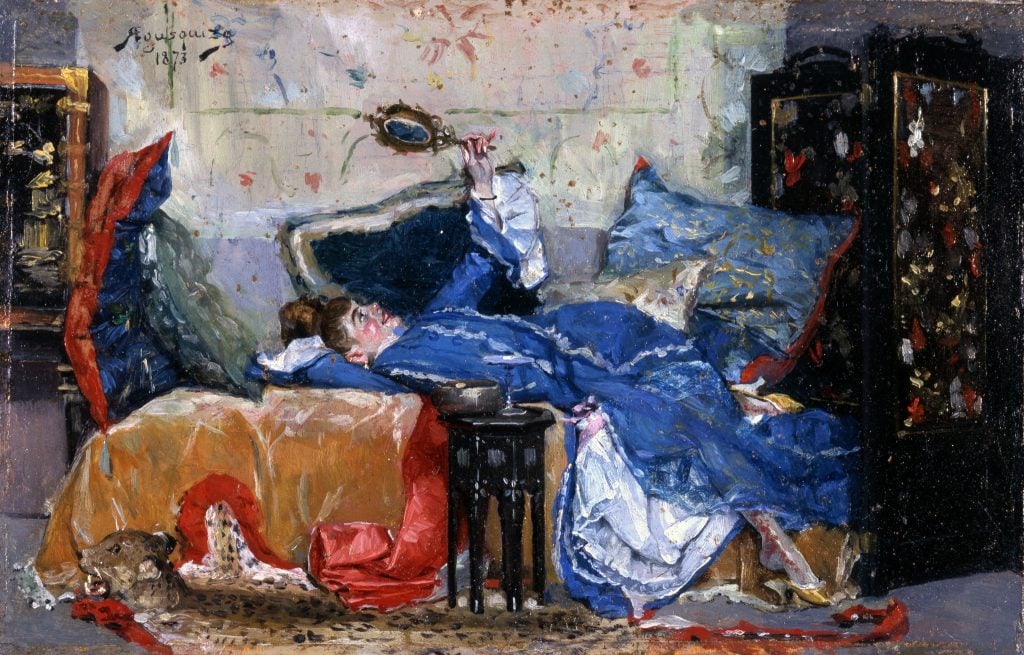
Last year the Hispanic Society Museum & Library (HSM&L) in Washington Heights reopened after a six-year, $20-million renovation. In 2024, as the jewel-box institution celebrates its 100th anniversary, the treasures amongst its trove of 750,000-plus objects continue to reveal themselves. Its compelling new exhibition is the first of its kind to examine the estrado, a multipurpose domestic space where elite households across the Spanish-speaking world displayed their finest objects. While the estrado’s origins are difficult to trace (it likely dates to the late Middle Ages in Al-Andalus, the Muslim-ruled territory of the Iberian Peninsula), by the 15th century, the space became almost exclusively gendered.
A Room of Her Own: The Estrados of Viceregal Spain runs through March 2, 2025, and offers a fascinating glimpse into a lesser known side of the museum’s permanent collection (though its famed Goya portrait of the Duchess of Alba does make an appearance). In addition to paintings, decorative objects, rare books, and engravings comprise the exhibition, exploring these wondrous domicile museums.

An installation view of “A Room of Her Own: The Estrados of Viceregal Spain.” Photo: Alfonso Lozano. Courtesy of the Hispanic Society Museum and Library, New York.
“I was really interested in researching the lived experiences of women, not just the objects, but female agency and collecting practices,” said Alexandra Frantischek Rodriguez-Jack, the show’s curator at last week’s opening. “The estrado is extremely prevalent in texts from the golden age of Spanish literature, like Don Quixote, as a metaphor for feminine extravagance and impracticality in the Hispanic world, so it’s shocking to me that it has essentially become all but forgotten.” Rodriguez-Jack explains that today the Spanish word “estrado” typically refers to a witness stand or a political platform, further masking its earlier meaning as a domestic space.
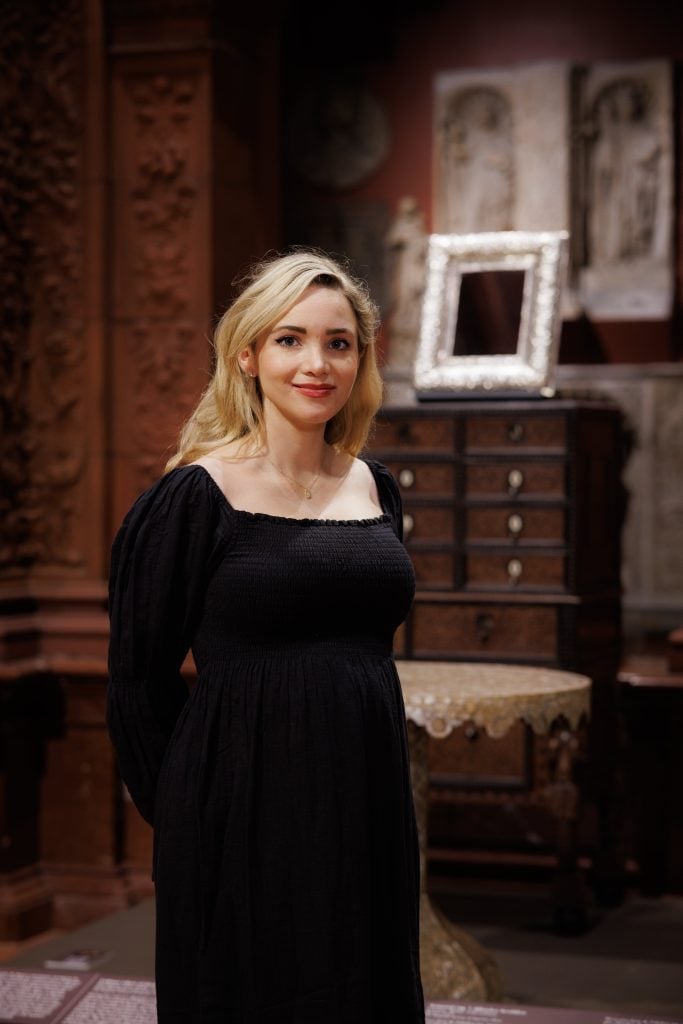
The show’s curator Alexandra Frantischek Rodriguez-Jack. Photo: Alfonso Lozano. Courtesy of the Hispanic Society Museum and Library, New York.
In addition to fictional accounts of how the estrado was perceived and the myriad ways it could be adorned, Rodriguez-Jack made sure every object within A Room of Her Own was grounded in research, whether post-mortem inventories, dowries, traveler’s texts, or Inquisition records. Through their consistent descriptions of resplendent interiors and the location of them within their residents’ homes, it is clear that one’s most valuable possessions were often reserved for the estrado as a means to display taste, wealth, status, and particularly in terms of the gendered estrado, a woman’s virtue.
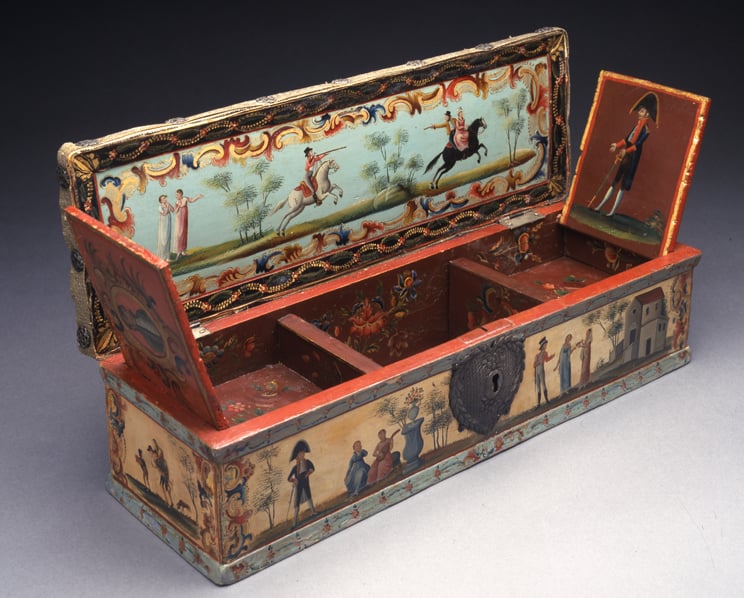
Sewing Box, Mexico, Michoacán, Pátzcuaro (1800). Courtesy of the Hispanic Society Museum and Library, New York.
Although explicit references to the estrado are harder to come by in the visual arts, Rodriguez-Jack shares that Peruvian engravings (a prime example of which is on view in the exhibition) and Mexican casta paintings occasionally depict estrado scenes. For the curator, it was paramount to examine and exhibit non-European perspectives, so often “overlooked;” for women of European, Indigenous American and West African descent all designed estrados.
In the late 16th and early 17th centuries, for example, Inca women were among its earliest adopters. “I think something that people do not realize about the Hispanic world, especially in the Spanish Americas, was the amount of material wealth that there was [largely a result of the exploitive silver mining industry]. Naturally, there was an explosion of material goods.”
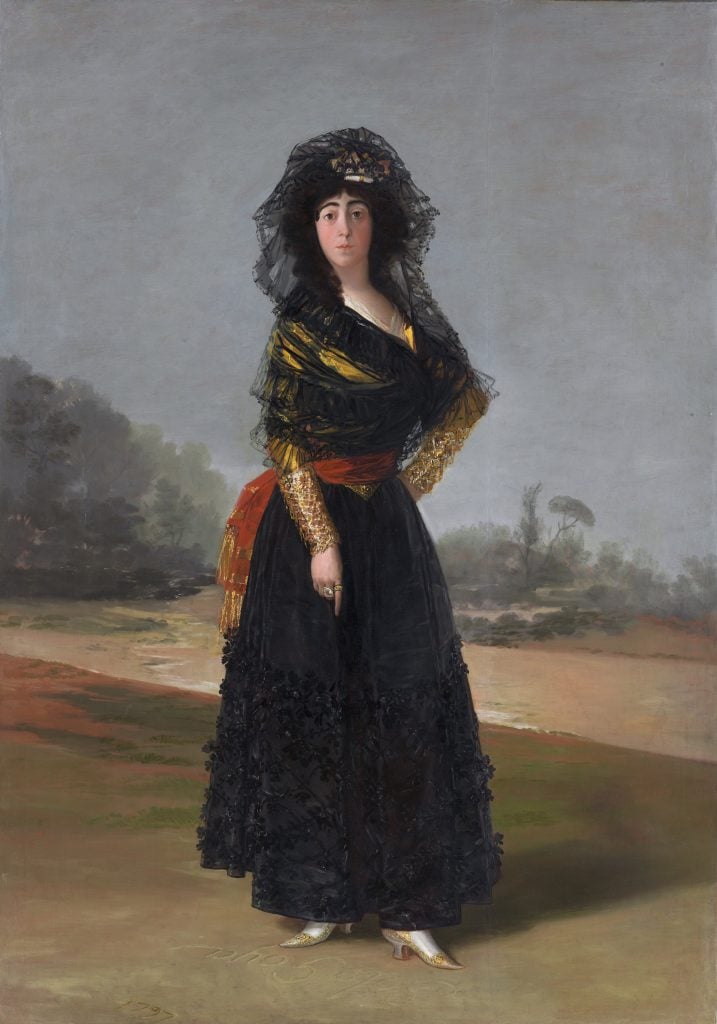
Francisco de Goya y Lucientes, The Duchess of Alba (1797). Courtesy of the Hispanic Society Museum and Library, New York.
To showcase the estrado’s regional variations, Rodriguez-Jack organized the exhibition primarily in geographical sections within the Hispanic Society’s Main Court, a venue whose ornate terracotta Renaissance-style architecture is the perfect complement for the dazzling pieces on view. Providing more visual context is a hybrid interior-like vignette featuring several quintessential objects, such as elaborate writing desks, the “crème-de-la-crème of estrado furnishings.” Textiles, whether lace or needlework (both common pastimes for Hispanic women to pursue in the estrado), or luxurious pillows and carpets, were abundant. Cushioned seating and textile-driven interiors directly derived from Islamic influences, which also come through in ivory-inlaid objects, such as an intricate 16th-century Spanish chest nearby, and other Moorish-inspired designs.
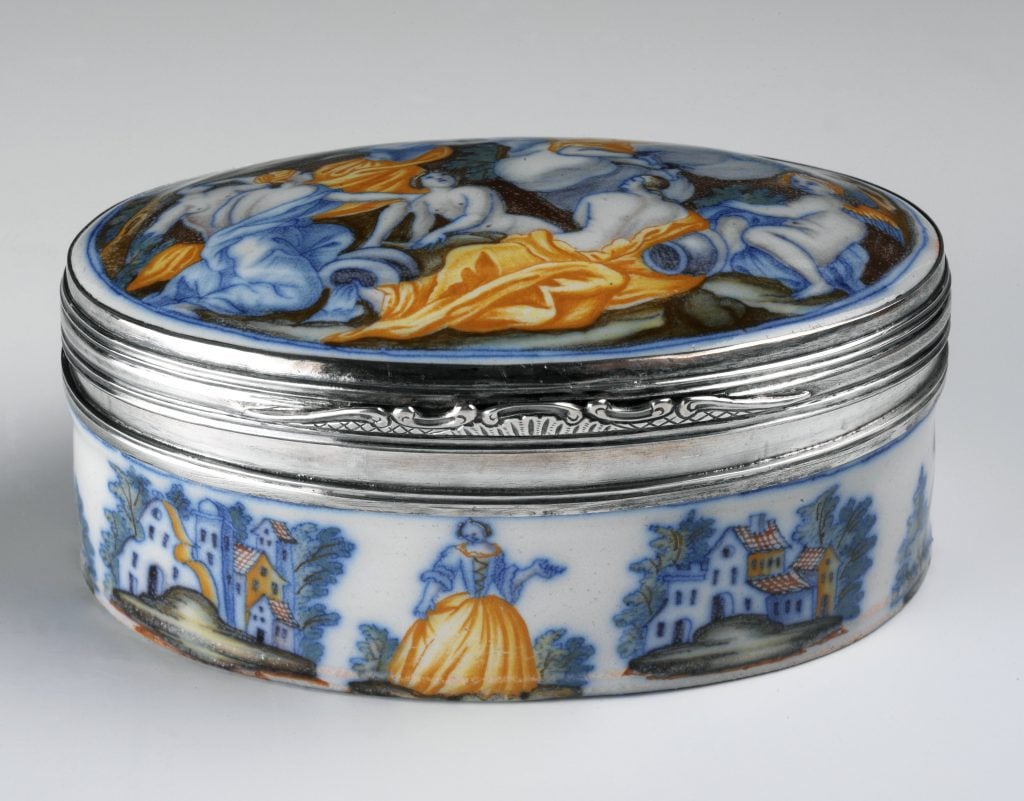
Alcora, Snuff box with metal mount (1775). Courtesy of the Hispanic Society Museum and Library, New York.
Globalization via expanding trade routes, such as the Manila galleon, brings additional inspiration into estrado furnishings. Imported goods, especially Japanese and Chinese screens, become “distinctive markers of the estrado in New Spain,” says Rodriguez-Jack, while around the globe, local craftsmen would copy international designs, mixing, for example, Flemish engravings or Asian lacquer with indigenous motifs. Smaller objects ranged from silver frames and reliquary jewels to porcelain cups and carved-stone figures, rendering the estrado a veritable cabinet of curiosities.
Estrados could be a room, or a space, sometimes demarcated on a platform, or tarima, within a room. There are also instances where a home had more than one estrado, such as one for a formal reception area, and another private space near the bedroom. During the 17th and 18th centuries when specialized furniture became commonplace, the estrado would house muebles ratones, or “mouse furniture,” which were petite versions of the latest chairs or other furnished forms, presumably used by men, further promoting a gender binary.
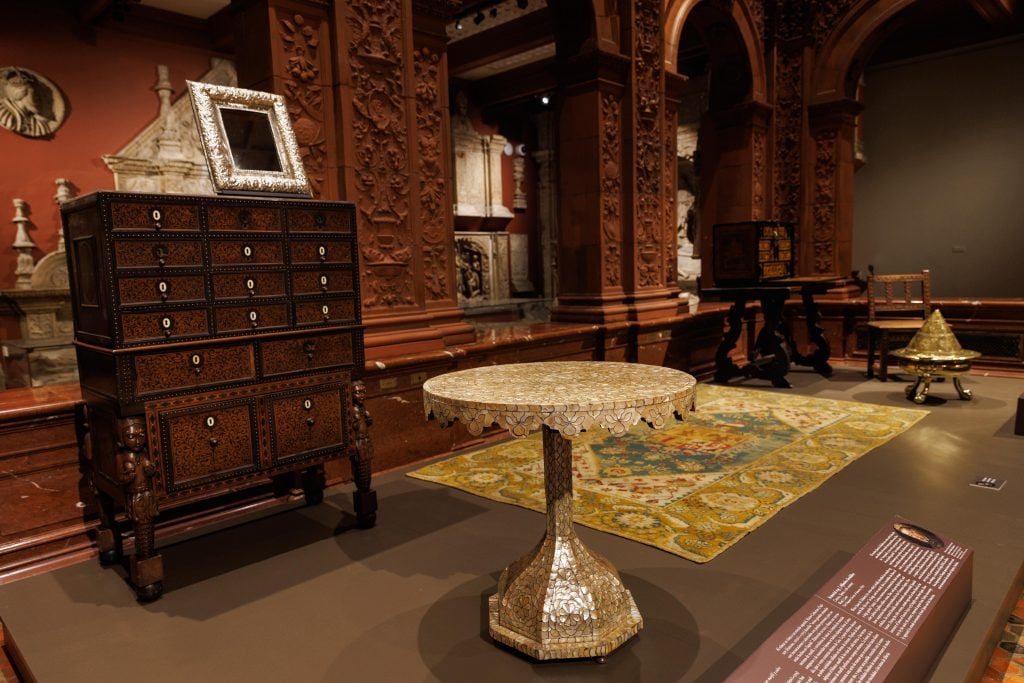
An installation view of “A Room of Her Own: The Estrados of Viceregal Spain.” Photo: Alfonso Lozano. Courtesy of the Hispanic Society Museum and Library, New York.
Rodriguez-Jack shares that in addition to educating children, estrados were used as all-day “hangouts” to socialize and dine with friends. “Women could barely leave their homes — the outside was considered unsafe, and staying home was seen as protecting their virtue,” she explains. “However, the estrado was a place where women could exercise their independence within the confines of their home by being artistic patrons and displaying their collection, giving them a semblance of agency that’s rare compared to other women in Europe during this period.”
This paradox comes through poignantly in Novelas Ejemplares y Amorosas, a collection of novellas written by Spanish feminist author, María de Zayas y Sotomayor, in 1637 (a fact that is in itself astounding for the time; likewise, A Room of Her Own also includes an 18th-century framed headboard with a painting by María Villamor to further honor women who defied social norms). The estrado, writes, de Zayas: “was to be a throne, seat, and refuge for the beautiful Lisis [the novel’s protagonist], who, as a sick woman, was able to enjoy this privilege: it was similarly of green brocade, with golden fringe and tassels of gold. As she [Lisis] was so devoid of hope on the inside, she wished to appear hopeful on the outside.”
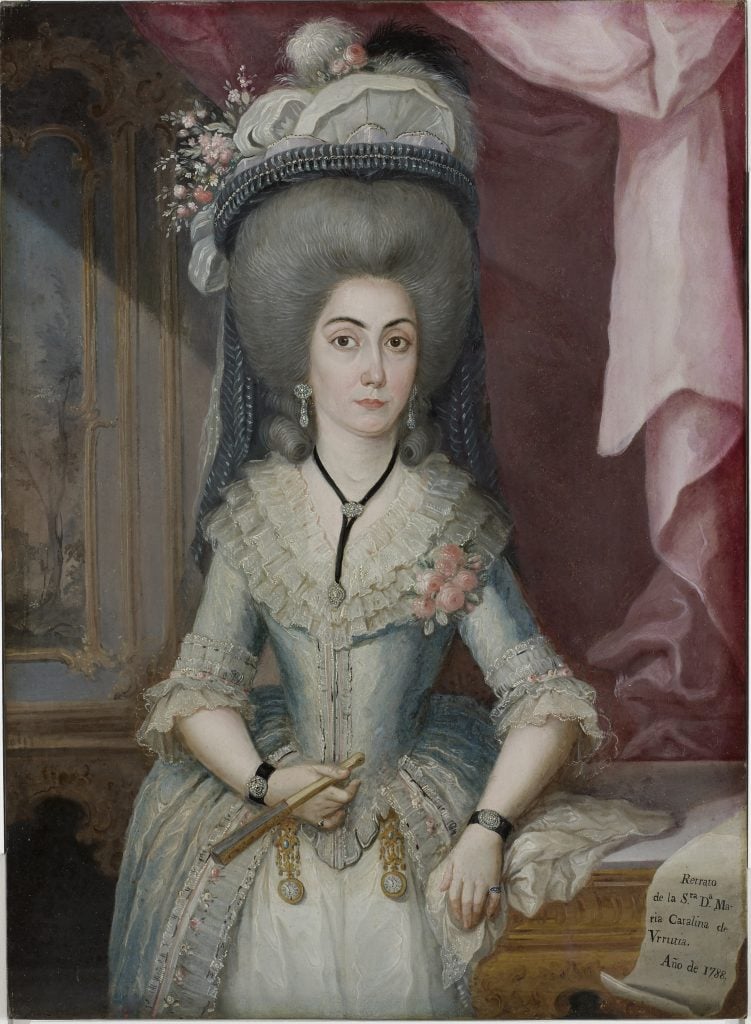
José Campeche y Jordán, Doña María Catalina De Urrutia (1788). Courtesy of the Hispanic Society Museum and Library, New York.
According to Rodriguez-Jack, the female protagonist goes on to lament the injustices and double standards women face simply due to their sex. It’s these kinds of frustrations that drove some women and their servants to practice witchcraft, reinforcing the notion of the estrado as a space of subversion. Often, this came in the form of food. Drinking hot chocolate was a common social ritual in the estrado (as several specialized cups and objects in the exhibition attest).
“Chocolate was frequently gendered, as it was considered an indulgent feminine weakness, in part because it wasn’t cheap,” says the curator, who in her research, particularly in 17th-century Mexican records, came across instances where women combined chocolate with unsavory mix-ins, like menstrual bed, to spite a man who wronged them.
The final section of the exhibition illustrates the 19th-century decline of the estrado, as England and France were producing more comfortable furniture, and the drawing room rose to international prominence. Nevertheless, with its intercultural aesthetic and array of uses, from female artistic patronage to witchcraft, the estrado is certainly a worthy subject for further investigation.





